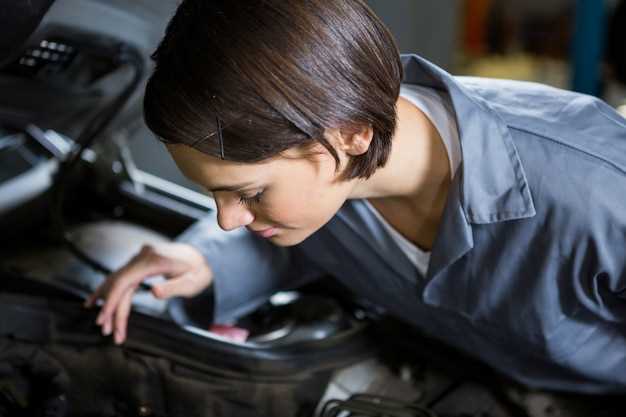

Engine overheating is a common yet serious issue that can lead to significant damage if not addressed promptly. Understanding the causes behind overheating is crucial for vehicle owners and mechanics alike. Various factors can contribute to this problem, ranging from coolant leaks to faulty thermostat operations, and even low oil levels. Each of these issues can disrupt the delicate balance within an engine, causing it to reach temperatures beyond safe operating limits.
Preventive measures play a key role in keeping your engine running smoothly and avoiding the costly repercussions of overheating. Regular maintenance checks and timely repairs are essential in identifying potential problems before they escalate. For instance, ensuring that the cooling system is functioning correctly and that coolant levels are properly maintained can significantly reduce the risk of overheating.
In cases where overheating occurs, prompt diagnosis and action are vital. Addressing the underlying causes quickly can save a vehicle from extensive damage and increase its lifespan. By conducting thorough inspections and following recommended solutions, vehicle owners can ensure their engines remain cool and efficient.
Common Symptoms Indicating Engine Overheating
One of the primary indicators of engine overheating is the presence of a warning light on the dashboard. Most modern vehicles are equipped with a temperature gauge or an engine overheating warning light that activates when the engine reaches critical temperatures.
A second noticeable symptom is steam or smoke escaping from under the hood. This occurs when the coolant or other engine fluids reach extreme temperatures, often resulting in leaks or even boiling over.
Another sign of overheating is a sudden loss of engine power. When temperatures rise, the engine may start to misfire or exhibit decreased performance, making it difficult to accelerate or maintain speed.
Additionally, drivers may experience unusual smells, such as a sweet odor from the coolant or burnt oil, indicating that the engine is running hotter than normal.
Lastly, observing irregular sounds, such as knocking or pinging noises, can signify that the engine components are being subjected to increased stress due to high temperatures. These symptoms often indicate that immediate attention is required to prevent potential engine failure.
Key Factors Contributing to Engine Temperature Rise

Several critical factors can lead to engine overheating, impacting performance and potentially causing severe damage. Understanding these factors is essential for maintaining engine health.
One primary cause of overheating is insufficient coolant levels. The coolant system is responsible for regulating engine temperature. Low coolant can result from leaks or evaporation, leading to reduced heat dissipation and an increase in engine temperature.
Another significant factor is a malfunctioning thermostat. The thermostat controls the flow of coolant to the engine and maintains optimal operating temperature. If it becomes stuck in the closed position, coolant cannot circulate effectively, leading to overheating.
The condition of the radiator also plays a crucial role. A clogged or damaged radiator can hinder airflow and the cooling process, preventing the engine from dissipating heat adequately. Regular maintenance and cleaning are essential to ensure efficient radiator performance.
Poor-quality or degraded oil can contribute to overheating as well. Engine oil lubricates components and helps dissipate heat. If the oil is dirty or insufficient, it may not provide adequate lubrication or cooling, increasing the likelihood of overheating.
Finally, engine strain due to excessive load can trigger overheating. Towing heavy loads or driving in extreme conditions without adequate preparation can cause the engine to work harder than designed, leading to a rise in temperature.
Practical Steps for Managing and Preventing Overheating

To effectively manage and prevent engine overheating, it is crucial to focus on several practical steps that can significantly contribute to engine longevity and performance. Regular maintenance is the foundation of a healthy engine, starting with the inspection and replenishment of coolant. Ensure that the coolant level is always within the recommended range; this fluid plays a vital role in dissipating heat effectively.
Additionally, check the coolant condition and quality. Over time, coolant can become contaminated or lose its effectiveness, leading to reduced thermal efficiency. It’s advisable to flush the cooling system and replace the coolant as per the manufacturer’s recommendations to maintain optimal performance.
Another critical aspect is to monitor the radiator for any signs of blockage or damage. A clean radiator allows for efficient airflow, and removing debris or dirt can prevent overheating. Utilize a soft brush or compressed air to clear any obstructions from the radiator fins.
Inspecting the thermostat regularly is also essential. A malfunctioning thermostat can disrupt the flow of coolant, leading to overheating. If you notice that your vehicle overheats but the coolant level is adequate, consider replacing the thermostat as a preventive measure.
It is also beneficial to examine hoses and clamps for any wear or leaks. Damaged hoses can leak coolant, which directly contributes to overheating. Replace any frayed or brittle hoses to ensure the proper circulation of coolant.
Using high-quality coolant compatible with your vehicle can help avoid thermal breakdown and corrosion, thus improving the overall efficiency of your engine’s cooling system. Always refer to your vehicle’s manual for the correct type and mixture of coolant.
Lastly, be mindful of your driving habits. Avoid heavy loads and excessive idling, which can strain the engine. Address any unusual temperature increases promptly, as early intervention can prevent severe damage. By adhering to these practical steps, you can manage and prevent overheating, ensuring your engine remains in optimal condition.







